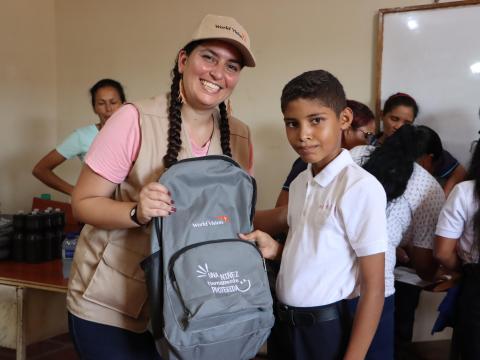The role of teachers as guarantors of human rights in schools

By Maritza Catanho, Education Specialist at World Vision Venezuela
All teachers must be constantly updated with respect to what is happening in their environment. It is crucial for them to situate themselves in the time and space of the community where they live and work, and to be contextualised, understanding the reality that surrounds their students without being overwhelmed by it. By recognising the problems that affect their students, teachers can exert a positive influence and generate transformations through education.
One of the most important elements to be able to exercise teaching in an integral manner and to be able to guarantee the accompaniment and strengthening of capacities in the educational community is training, based on values and human rights. These elements should be included in the curricula, but as long as these spaces do not exist, it is necessary to seek alternatives for autonomous and continuous training.
The right to education not only facilitates social inclusion, but also allows children and adolescents to enjoy all the rights to which they are entitled. As Tomasevsky (2004) points out, an education based on human rights guarantees the exercise of these rights. UNESCO (2007) also emphasises that education is a fundamental human right that allows us to develop as individuals, contribute to social welfare and advance as a species.
Within the framework proposed by human rights, education fulfills a double function, since it is a right, but it is also a means for human development and the promotion of each of them. From there, the school and the school educational experience, is configured as a key space to live and exercise these rights.
The first step towards this objective is that all school actors, from teachers to directors, adopt a rights perspective, understanding both the regulations and the scope of these rights. In addition, the school must assume itself as an institution that protects and promotes these rights, becoming a privileged place for their defence.
The second key component is the school's capacity to articulate with the comprehensive protection network for children and youth. This implies in-depth knowledge and effective communication with the relevant local entities, making it possible to visualise the characteristics, potential and needs of the educational community in terms of the fulfillment of rights.
The double challenge facing education today is also evident: it is no longer enough for children to attend school; it is necessary that they find quality education there. Each institution must promote the integral development of each student, strengthening the link with their families and communities, thus contributing to collective well-being and social development.